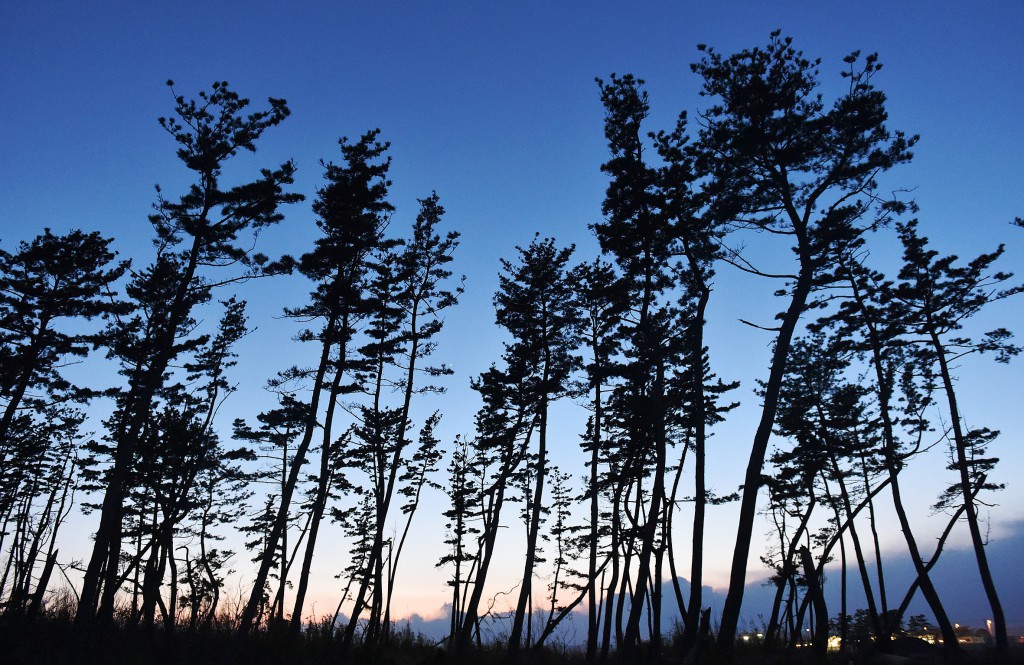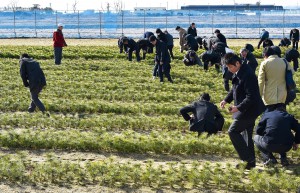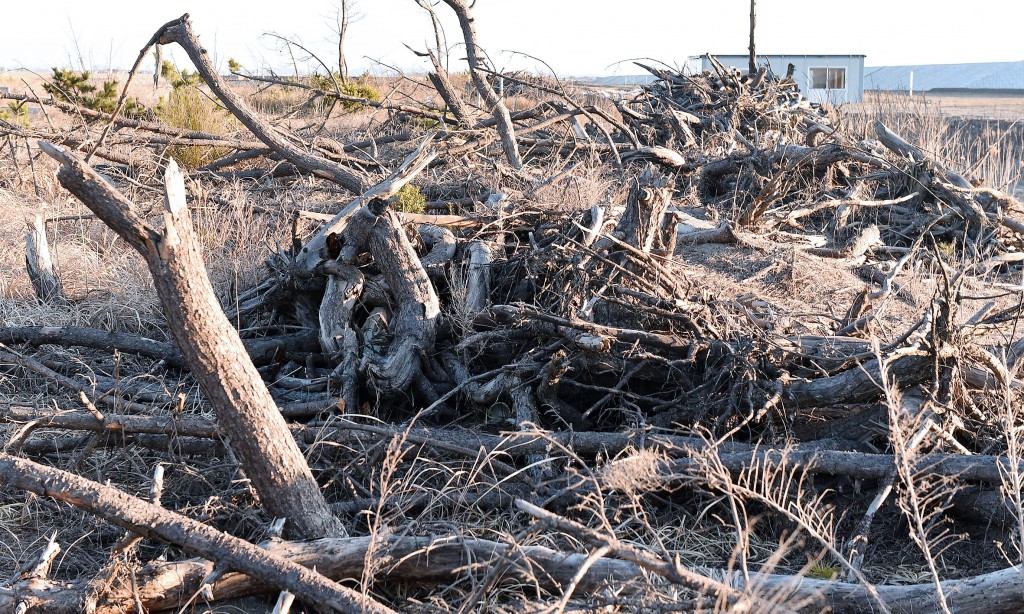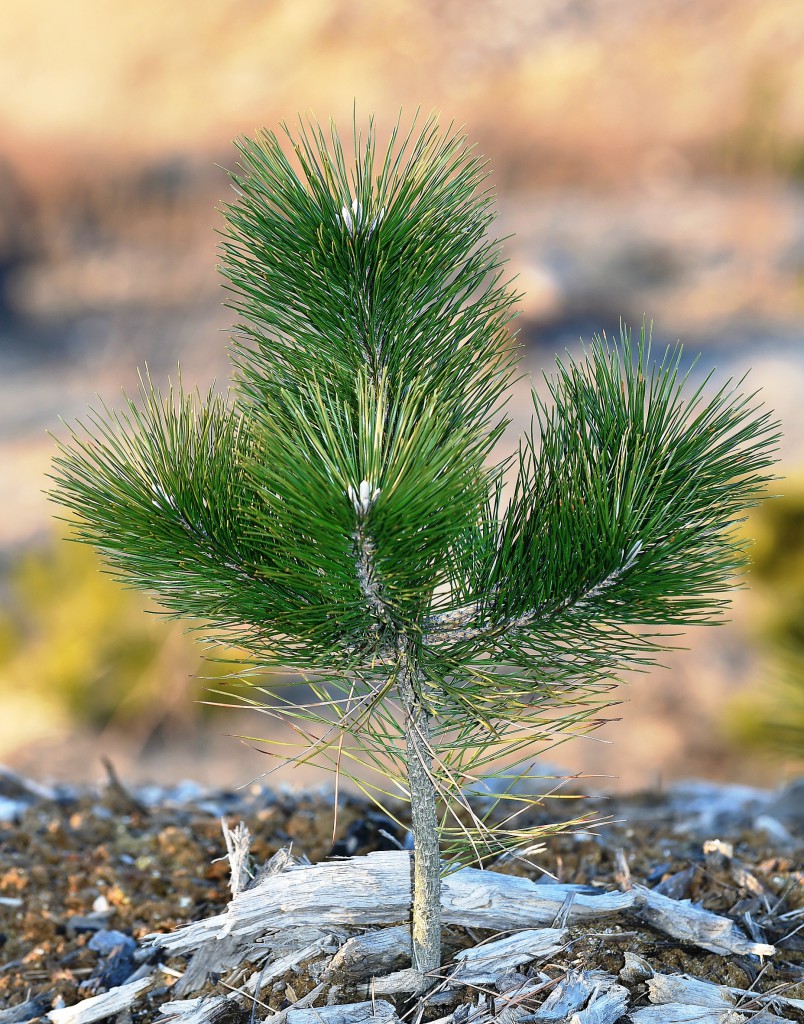
Project will reforest a 5-kilometer-long, 150-meter-wide coast. Wooden fences are placed to protect young seedlings from strong winds. This area should be completely covered by black pine trees in a few decades (in Natori-shi, Miyagi Prefecture)
Kotaro Yamada
-Coastal forest restoration project (Natori-shi, Miyagi Prefecture)-
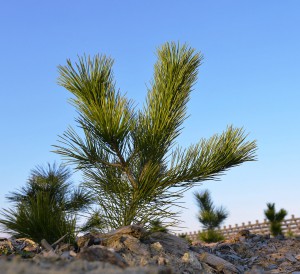
First-generation black pine tree seedlings made them through first severe winter and took roots in damaged area
Four years ago when the Great East Japan Earthquake struck Japan, 400-year-old coastal forest in the Tohoku region was lost to a massive Tsunami. And now, farmers of Natori-shi, Miyagi Prefecture, are trying to reforest the coast, pursing a long-term project that aims at restoring the 100 hectares coastal forest in Natori-shi, Miyagi Prefecture, by 2020, using locally-grown black pine trees. The revitalized forest will become a natural shield from destructive sand storms and salty winds, so Natori farmers are strongly determined to complete the task that will take several decades.
“These pine trees are vital to farmers here,” said a 66-year-old local farmer, Yuichiro Ohtomo, looking at young black pine tree seedlings. The 3.11 tsunami devastated almost all coastal forest in Natori. Since then, farmlands of surrounding communities are often exposed to strong winds of almost 20 kph. Some agricultural tsunami victims were fortunate enough to restart their business but sand storms blown from the coast often cause damage to their products and make them unsellable.
“We need to restore the forest.” In February 2012, local farmers including Ohtomo raise to establish the Association for the Coastal Forest Restoration and asked OISCA International, a public interest incorporated foundation, for its support. Currently, the association has 32 members who seed black pine trees, raise the seedlings and weed the nursery. Planting 50,000 young black pine trees every year until 2020 is their ultimate goal.
The pine tree forest had been protected by local farmers for more than 400 years while the forest had been protecting the farmers from severe natural environment including cold Pacific wind and salt damages to their products. But the tsunami in March 2011 uprooted the forest, leaving the 1,700 hectares bare, and the farmers lost their protection.
Last spring, the association planted 78,500 first-generation pine tree seedlings in the damaged area, successfully with some already growing up to about 50 centimeters tall. This year again, it plans to add approximately 50,000 new seedlings to cover another 10 hectares in late June and May. “We’ve learnt the importance of the forest hard way after loosing it all. Now our goal is to restore the forest and hand it down to younger generations,” said Ohtomo.


